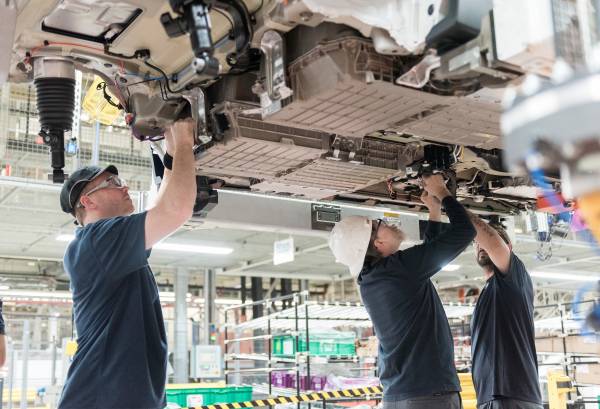“If you spend too much time thinking about a thing, you’ll never get it done.”
— Bruce Lee
THE ART OF LEADERSHIP
Is Overthinking Holding You Back?
Bruce Lee's Insight on Action Over Thought
"If you spend too much time thinking about a thing, you'll never get it done." — Bruce Lee.
In the fast-paced world of leadership, decision-making is crucial. Bruce Lee's words remind us that excessive deliberation can paralyze progress. As leaders, we often find ourselves caught in analysis paralysis, weighing every option until opportunities slip away. While thoughtful consideration is important, overthinking can hinder action and stifle innovation.
Consider how many ideas remain unrealized because we fear making the wrong choice. In leadership, inaction can be more detrimental than making a less-than-perfect decision. By embracing action, we create momentum, learn from outcomes, and inspire our teams to do the same.
Moreover, taking decisive steps encourages a culture of proactivity within our organizations. It signals to our teams that progress is valued over perfection and that learning through doing is a vital part of growth.
So, how can we balance thoughtful planning with decisive action? It's about setting clear goals, trusting our instincts, and being willing to take calculated risks. Leadership isn't about knowing all the answers but about forging ahead despite uncertainties.
Let's open the conversation: How has overthinking affected your leadership journey? What strategies have you employed to overcome indecision? Share your experiences, and let's explore how we can move from thought to action, turning ideas into realities.
COMMERCIAL CONSTRUCTION
Can the Construction Industry Overcome Labor Shortages and Leverage Technology for Growth in 2025 Amid Policy Shifts and Financial Challenges?
As we look ahead to 2025, the engineering and construction industry stands at a crossroads of opportunity and challenge. With a steady increase in construction spending and employment levels surpassing previous peaks, optimism is in the air. However, the sector grapples with persistent labor shortages, evolving skill requirements, and the need to integrate advanced technologies.
The question on everyone's mind is: Can the industry adapt quickly enough to seize the growth opportunities while navigating financial constraints and an evolving policy landscape?
One of the most pressing issues is the significant talent gap. Despite the industry's growth, attracting skilled workers remains a hurdle. Younger generations show less interest in traditional construction roles, and the existing workforce is aging. How can firms make construction careers more appealing to the next generation?
Technology might offer part of the solution. The adoption of artificial intelligence, robotics, and digital twin technologies is transforming operations. These tools not only enhance productivity but could also attract tech-savvy younger workers. But are companies ready to invest heavily in these technologies, and can they integrate them effectively?
Financial strategies also play a crucial role. Firms are considering mergers, acquisitions, and strategic divestitures to optimize their portfolios. The influx of private equity investments indicates a shifting landscape. Will these financial moves strengthen the industry or introduce new complexities?
Furthermore, government policies and investments, such as the Infrastructure Investment and Jobs Act, present both opportunities and uncertainties. Tariff changes on materials like steel and aluminum could impact costs and project timelines. How will firms adapt to these policy shifts while maintaining profitability?
As we approach 2025, it's clear that the construction industry must address these challenges head-on. Stakeholders across the board from executives and workers to policymakers and investors need to engage in open dialogue. The future success of the industry may well depend on collaborative efforts to innovate, adapt, and grow.
What are your thoughts? Can the construction industry overcome these hurdles to achieve sustainable growth in 2025?
INFRASTRUCTURE INDUSTRY
America’s Battery Boom Faces Political Uncertainty: Can Policy Changes Derail Clean Energy Momentum?
The U.S. is witnessing an unprecedented surge in clean energy manufacturing, with billions of dollars in investments fueled by recent federal legislation like the Infrastructure Investment and Jobs Act and the Inflation Reduction Act. These laws have been instrumental in funding projects across the country, reshaping supply chains, and expanding the green workforce. Among these developments, a new battery plant in South Carolina is set to supply BMW, showing how key clean energy facilities are moving forward at least for now.
Researchers James Morton Turner of Wellesley College, along with Joshua Busby and Nathan Jensen from the University of Texas at Austin, have tracked 225 projects since the Inflation Reduction Act became law in 2022. Their research found that these projects represent a massive $127 billion investment, with the potential to create over 131,000 jobs. Battery production alone is set to support nearly 30,000 new jobs, spanning major regions such as the Southeast, Midwest, and Southwest.
However, despite progress, there are growing concerns about the political winds. Some high-profile reports, such as one by The Financial Times, have suggested potential slowdowns, with around 40% of projects facing delays, including battery manufacturing, renewable energy, and semiconductor production. Although Turner and his colleagues found that 13 of 23 battery factories are on track with nearly $40 billion in planned investments and 352 gigawatt-hours per year in capacity an uncertain political landscape is raising red flags for the future.
As the 2024 election nears, a change in administration could jeopardize the momentum these clean energy initiatives have gained. With several Republican candidates pledging to repeal or significantly amend the Inflation Reduction Act, the fear is that policy shifts may curb crucial funding and disrupt tax incentives that clean energy companies depend on. These incentives, especially the Advanced Manufacturing Tax Credits, are set to last until 2032 but could be diverted or delayed by an administration less supportive of green energy.
The battery boom could also impact electric vehicle production, as projects like South Carolina’s Envision AESC plant move closer to completion. Expected to produce 30 gigawatt-hours of batteries annually, the plant will employ 2,700 workers, underscoring the potential job growth tied to these ventures.
Despite ongoing efforts, the real test for America’s clean energy future may come at the ballot box. As demand for electric vehicles and renewable energy soars, will political support keep pace, or will a power shift put these advancements at risk? Turner and his colleagues remain cautiously optimistic, but the question looms: will this clean energy boom sustain or face a sudden stall due to policy changes?
RESIDENTIAL RESEARCH
Housing Market Forecast: Is 2025 the Year of Affordable Home Buying, or Will Prices Stay High?
The U.S. housing market has been a hot topic as record-high home prices and rising mortgage rates have discouraged potential buyers, raising the question: will 2025 finally bring some relief? Experts suggest mixed signals, with potential cooling in price growth yet persistent obstacles in affordability.
A key driver of current trends is the ongoing supply shortage, which continues to sustain high prices. Since homeowners are “locked in” by previous low mortgage rates, they’re hesitant to sell, limiting the number of existing homes on the market. This trend is compounded by growing interest rates, which have recently hovered around 6-7%. While this is below the 2023 peak of nearly 8%, rates remain high enough to hinder buyers' purchasing power.
However, some experts forecast a more favorable buying landscape by 2025, predicting a “demand surge” if rates start declining. Analysts at the Mortgage Bankers Association (MBA) expect spring 2025 to spark increased market activity if mortgage rates edge closer to 5%. This predicted rate drop could release pent-up demand, driving more sales and stabilizing prices. Experts advise that waiting too long might backfire if prices rise again, driven by heightened demand from sidelined buyers eager to capitalize on lower rates.
Despite these anticipated changes, affordability remains challenging. While monthly home price gains have slowed, they continue to outpace wage growth in many areas, leaving potential buyers, especially first-timers, struggling. Builders are now targeting more affordable, smaller homes, which may provide lower-cost options and help bridge the gap in accessible housing.
Are we on the verge of a 2025 housing market crash? Experts are skeptical. Unlike 2008, today’s market is built on more solid ground, with homeowners generally holding greater equity and fewer risky loans. While prices might not drop dramatically, gradual improvements could benefit buyers in 2025.
Whether 2025 delivers affordability improvements or not, real estate remains a long-term investment. Experts agree: that rather than timing the market, prospective buyers should focus on finding homes that align with their needs and budgets. Those considering a purchase are encouraged to stay informed, ready to act, and flexible in their housing preferences to seize opportunities in a potentially competitive market year.
TOOLBOX TALK
The Importance of Situational Awareness on Construction Sites
Introduction
Good morning, Team! Today, we’re focusing on situational awareness—a key skill for maintaining safety on the construction site. Situational awareness is the ability to recognize, understand, and react to what’s happening around you. Construction sites are busy and constantly changing, with various hazards that can lead to serious incidents if not managed. Staying aware of your surroundings helps you avoid accidents, work more effectively, and protect both yourself and others.
Why Situational Awareness Matters
Many accidents happen because of distraction, complacency, or failure to notice potential hazards. Practicing situational awareness means you’re always alert to changes in your environment, like moving machinery, falling objects, or new obstacles. This awareness can prevent injuries, improve safety, and help the whole team operate more smoothly.
Strategies for Improving Situational Awareness
Stay Focused on the Task and Avoid Distractions: Limit distractions like mobile phones or unnecessary conversations while working. Keeping your attention on the task and surroundings is essential to spotting hazards.
Observe Your Surroundings Regularly: Frequently scan the area around you. Look out for moving equipment, ground conditions, and any new risks that may have developed since your last task.
Communicate with Your Team: Situational awareness is a team effort. Communicate with others about any potential hazards or changes you notice. Use clear hand signals or radios if needed, especially in high-noise areas.
Follow the “Stop, Think, Act” Process: Before starting any task, stop to assess your surroundings, think about potential risks, and act with caution. This simple habit can significantly reduce the chances of accidents.
Practice Good Housekeeping: Clutter and disorganization can create unexpected hazards. Keeping the site clean and organized improves visibility, minimizes tripping risks, and helps everyone stay more aware of their surroundings.
Discussion Questions
Have you experienced a near-miss or accident that could have been prevented with better situational awareness? What happened, and what did you learn?
What helps you stay aware of your surroundings on the job?
How can we work together to improve situational awareness across the site?
Conclusion
Situational awareness is essential for preventing accidents and staying safe on a busy construction site. By staying focused, observing surroundings, communicating with others, using the “Stop, Think, Act” process, and practicing good housekeeping, we can work more safely and protect one another. Let’s commit to maintaining strong situational awareness each day to reduce risks and create a safer work environment.
Stay alert, stay safe!









